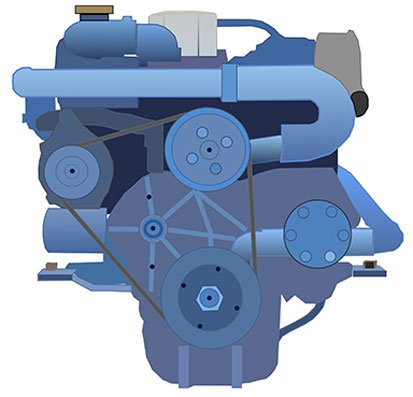Engine failure
If your engine fails or is overheating there are a number of things to check immediately:
• Air filter blocked – check, clean or replace
• Cooling water low – fill when engine is cold. Check for leaking hoses
• Exhaust pipe blocked
• Fuel filter – a blockage reduces power and can stop the engine stop. Check, clean or change the filter
• Lack of lubrication – check engine and gearbox oil levels
• Oil filter blocked – replace
• Raw water inlet filter – a blockage causes overheating and can lead to engine failure. Close seacock, check and clear filter. Re-open seacock. Check object (eg. plastic bag) is not obstructing seacock
• Water pump impeller failure – cooling system fails and engine overheats. Check the rubber impeller is slightly flexible, not hard, and replace if necessary
• Worn drive belts – replace if they are frayed or shiny
Many engine failures at sea are caused by lack of maintenance, resulting in filter blockages, engine pump failures, overheating and then breakdown.
It is worth remembering that one of the most common reasons for marine rescue service call outs is for boats running out of fuel.
Tips to avoid engine failure:
- Keep the engine regularly maintained
- Always do engine checks before setting out
- Check fuel and oil levels regularly (don’t rely 100% on gauges!)
- Check drive belts for wear and tightness
- Look out for oil and coolant leaks
- Check fuel filter for water or dirt. Drain off any contaminants until the fuel in the clear glass bowl by the filter is clear
- Learn how to bleed the fuel system if air gets into it
All of this advice and more is available in our easy-to-use, quick to access app for iPhone and Android. Go to SafeSkipper.com for more.









